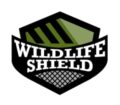Trent Lakes, Ontario – 2024
This article will analyze and recount a case of a groundhog burrowing under a Bunkie, like many jobs the result of the inspection can be very different from the initial assumption. This visit is located on an Island in Catchacoma Lake by 45 Fire Rte 216 in Trent Lakes, Ontario.
The technicians, before the work is done, must first inspect and confer with the customer or customers on the issue and then must inspect for the source of the activity, This situation began as an inspection for a groundhog burrowing under a Bunkie in the back yard of a house in Trent Lakes. The resulting inspection revealed it was not a groundhog but a raccoon that was tearing out insulation to make a burrow to call home.
Catchacoma Lake, Ontario: The Municipality of Trent Lakes
Trent Lakes is a rural and mostly wooden municipality made up of cottages and is close to Peterborough. The community is very spread out and made up of islands in a large lake that attracts a great deal of tourism. As time went on the area has become home to more than tourists with people moving to the area permanently and making it home.
Exterior Inspection
When the technician arrived on site they performed an exterior inspection of the property and found activity under the Bunkie that appeared to be larger and more aggressive than the initial assumption made by the customer, while groundhogs are a common issue in areas like Trent Lake there was no expectation that the animal would have been a raccoon. This is the reason a professional inspection is needed. The resulting issue showed that there was wide access to the Bunkie and that a lot of work would be needed.
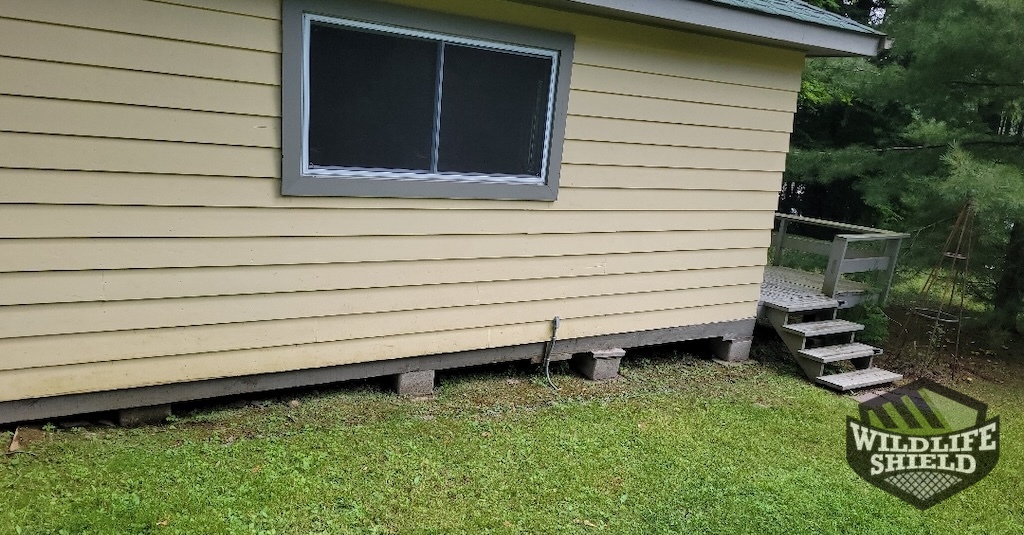
Initial Measures
The first step was to seal off the area the animal had gotten into which involved a process called trenching as the access point was from under the Bunkie and it was accessible on almost all sides. Animals like skunks and raccoons and rodents like rats like to live under structures and make burrows and dens. To prevent this a one-foot by six-inch trench is dug around the accessible perimeter of the structure and galvanized steel mesh is attached to the side of the structure and buried into the ground one foot down and six inches out. The installation of a one-way door at the burrowing entrance would ensure any animal that where still inside could vacate.
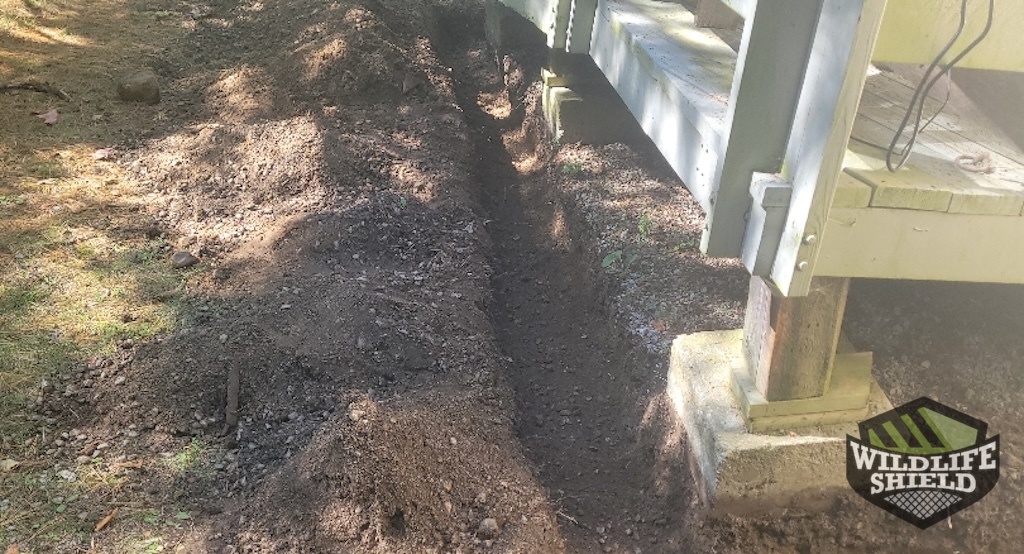
Proposed exclusion
The technician sealed off the Bunkie using the steel mesh and installed one-way doors to allow the raccoon to vacate humanely, this process can anywhere from seven to ten days as the raccoon does not want to leave their den. They will wait until they are too hungry to remain and only then will they vacate due to the possibility of starvation.
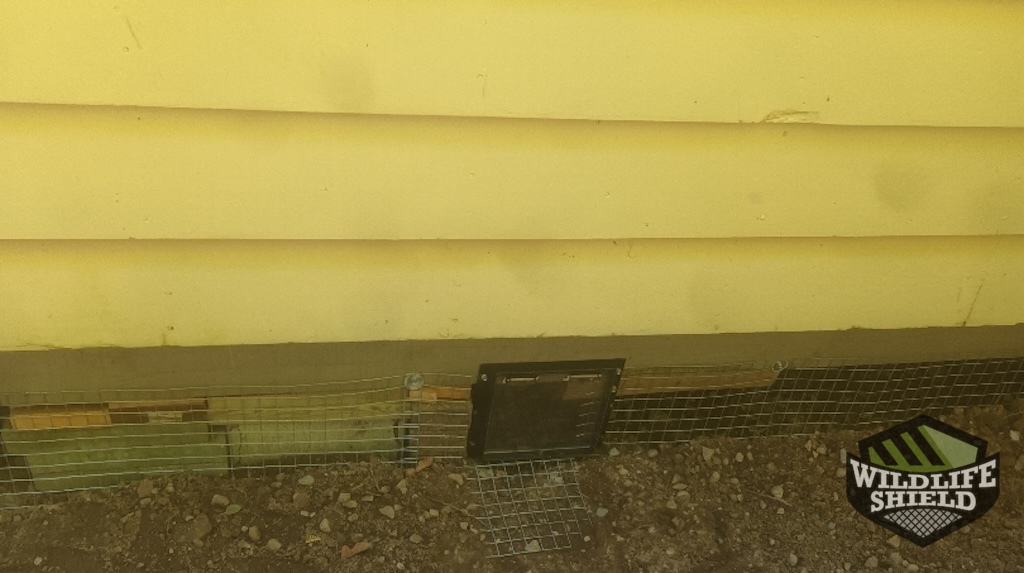
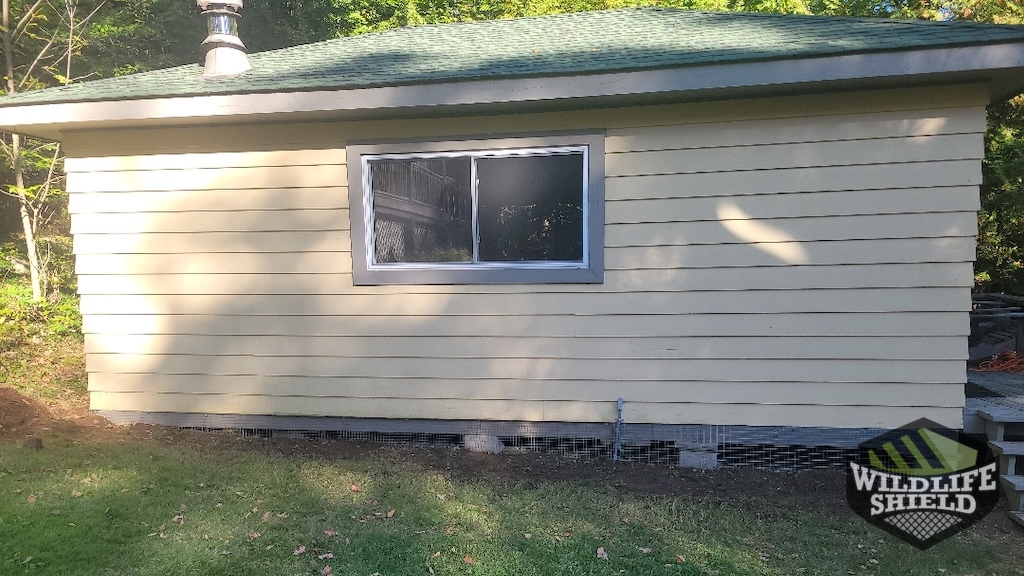
Conclusion
The technician excluded the Bunkie and installed the one-way door which allowed the raccoon to vacate. The trenching was completed resulting in the successful completion of the work. This is a situation that often comes up in pest and wildlife control and is why technicians need to do thorough inspections as oftentimes things may not be as simple as they appear. Had the technician not realized the animal was larger than a groundhog they may have used a smaller door which would have trapped the animal inside causing them to die. A professional inspection is always the best route.
Contact us at Raccoon Control
See more of our work at the following links:
Case Study: Raccoons Leave Feces on Toronto Property, Rats Burrow Under Deck
